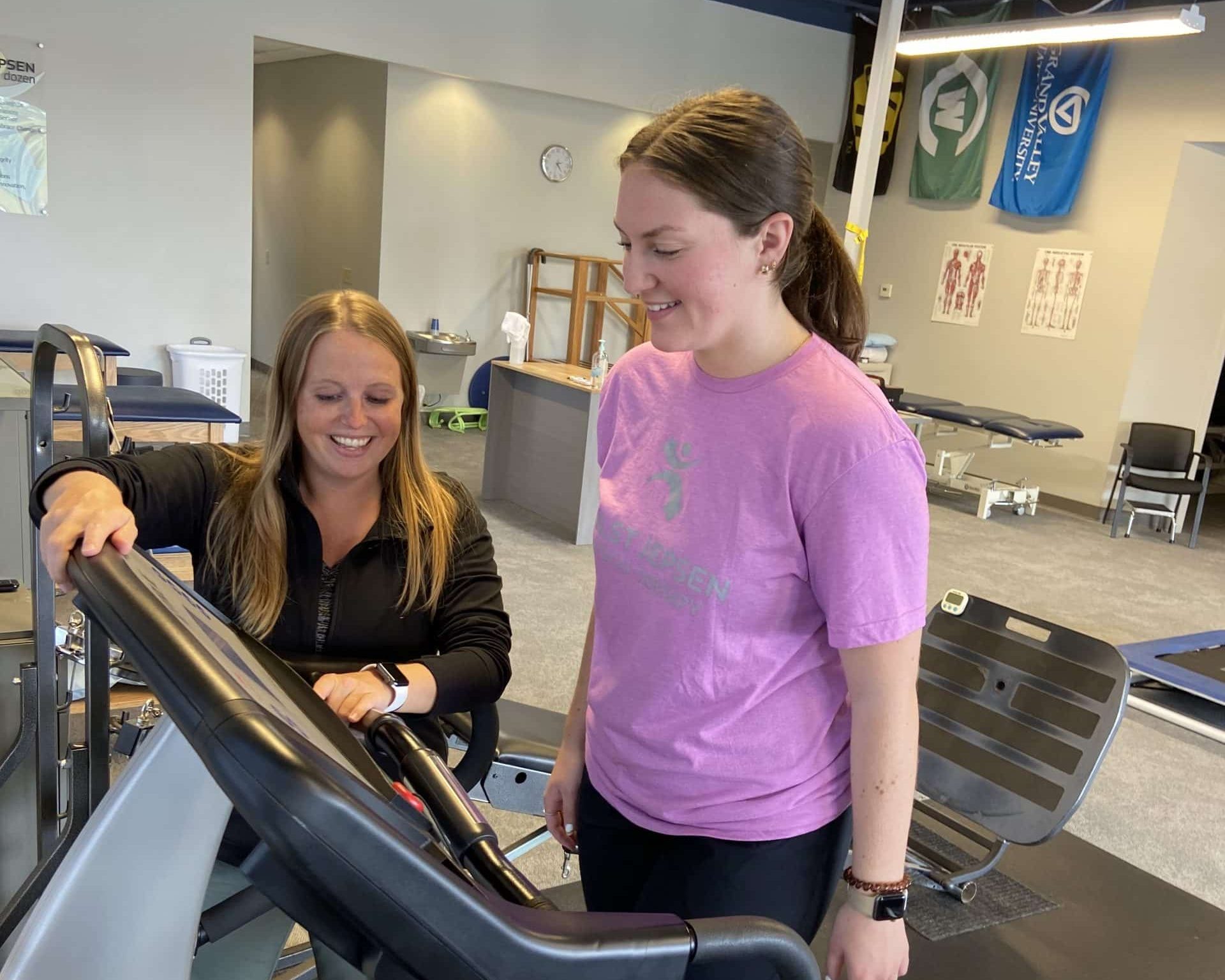Slow and Steady

Recovery and rehabilitation from pain and injuries can be a slow and steady process. Whether it’s in West Michigan or abroad, as a society, we tend to think we need to do things harder, faster, or more often in order to succeed. It is not always the case. Truly it is better to take things slower and more controlled. At Hulst Jepsen Physical Therapy in Michigan, we are trained to help guide you along your recovery. We give you tips and exercises throughout your journey to help you succeed with your rehabilitation and get you back to doing the things that you enjoy. Here are a few tips to consider with returning to activity.
More is not always better!
If it feels good to walk 5 minutes, it does not mean that you should walk 30 minutes. If it feels good to do 10-pound bicep curls, it does not mean that you should do 20 pounds. If you push it too hard and ignore the aches and pains, you are likely to irritate or even injure your body while recovering and take a step back versus a step forward. You want to slowly progress with your time, repetition, or resistance in order to return to the activity safely.
Ease back in!
Don’t just jump back into activity like it was before the injury. Even when you are feeling better and stronger, you can’t assume that you can do all the things like you could before. You have to ease back into things and assess how your body responds. Just as you would train for a race or a sport, you also have to train for standing, walking, or daily activities as well. You may have to dibble dabble with activity or condition yourself for the full activity. Just remember slow and steady wins the race!
Listen to your body!
If it truly hurts to do something, you are not ready for it. Now some small ache, fatigue, or soreness that doesn’t hinder you can be okay after activity. If that ache or soreness makes you not want to move or get out of bed, then you did too much. You may not always feel these aches or pains during the activity, but you may experience them in the next day or two. You will have to assess your activity and determine what might have caused that extreme soreness. “No pain, no gain” is not the mentality, but some feelings can be healing. Your body will tell you what it can handle if you listen to it. We often tend to ignore the smaller aches or pains that can be warning lights to bigger issues coming.
Modify the activity so you can do things!
We want you to be able to do the things you enjoy, but you may have to modify that activity when you initially return to it. You want to limit the amount of time you are doing an activity to prevent fatigue and soreness. Give yourself rest breaks in order to get the tasks done. You can also change it up. Maybe you will do something with the opposite hand for a bit or do an activity standing vs sitting. You really want to avoid any prolonged activity or positioning while recovering from an injury. It will be better to do the activity you love differently than not at all.
Do your home exercises!
Your physical therapist has given you a recipe for success when it comes to full recovery. We specifically choose the exercises for your home exercise program in order to continue your progress and prevent future injuries. Doing your daily walking, chores around the house, working, or exercising at the gym is NOT the same as your home exercise program. With these activities, you are more likely to use strong and powerful muscles and may even compensate for your injury. You will target the area you need help with if you follow your home exercise program.
We are here to help!
We want you to succeed with rehabilitation and recovery and we truly enjoy hearing about you getting back to the activity you love. There may be some road bumps or obstacles along the way, but we are here to help you manage them and get to the other side. Even if you have graduated from physical therapy and doing your own home exercises now, we are still in your corner. We are a phone call or email away. We also offer FREE consultations that you can schedule to meet with us in the clinic. This will help us re-assess you and give you praise for your continued success or guide you back on the right path to success. Feel free to reach out to your former physical therapist at any time. There is a good chance that we have thought about you and your recovery, and miss you!
If you need help with recovering from an injury and getting back to the activity that you love, reach out to your local Hulst Jepsen Physical Therapy clinic today. Schedule a free consultation to determine if physical therapy is right for you or if you just need some tips and tricks to get you there. Click Here to Schedule
